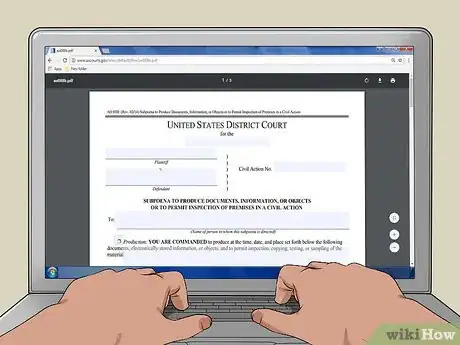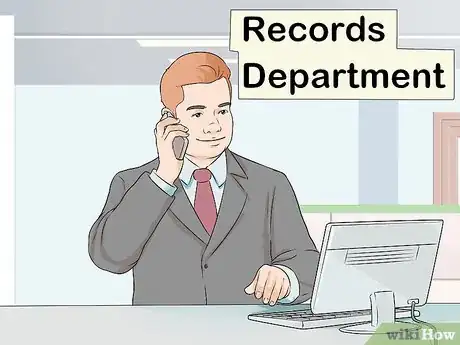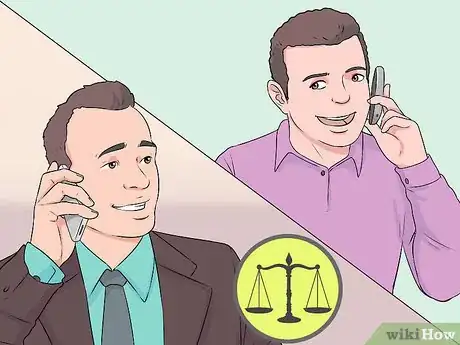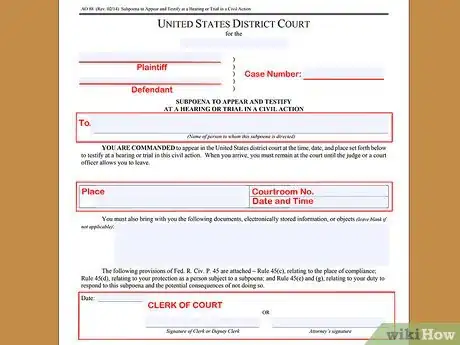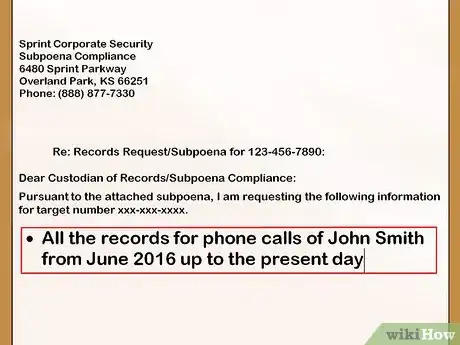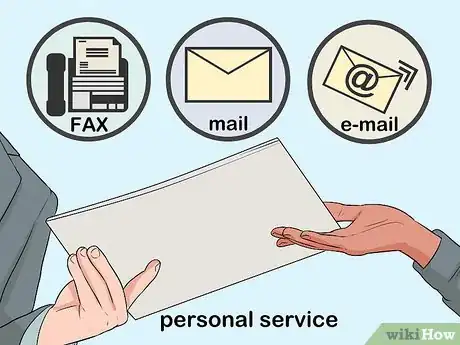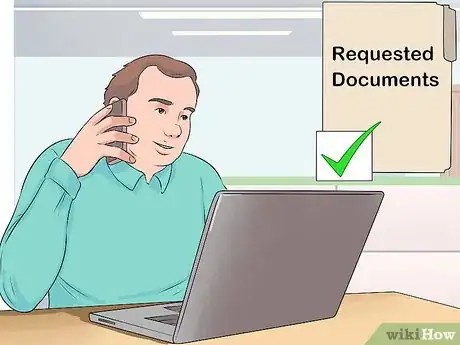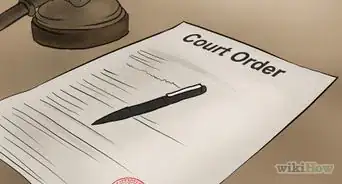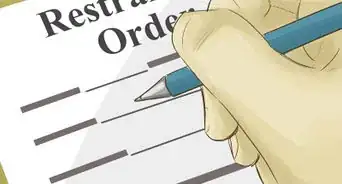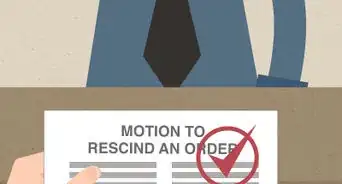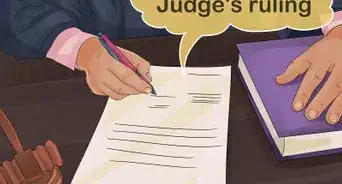This article was co-authored by Lahaina Araneta, JD. Lahaina Araneta, Esq. is an Immigration Attorney for Orange County, California with over 6 years of experience. She received her JD from Loyola Law School in 2012. In law school, she participated in the immigrant justice practicum and served as a volunteer with several nonprofit agencies.
This article has been viewed 101,050 times.
You need evidence to win a lawsuit, and you can use a subpoena to get it. A subpoena is a legal command to turn over documents. To issue a subpoena, you must first have started a lawsuit. You can then fill out a subpoena form identifying the phone records you want. In many circumstances, you have a right to these records and they may help you prove your case. For instance, you can subpoena the phone records of a person who caused a car crash you were involved in to show that they were distracted by the phone while driving.
Steps
Obtaining Forms and Information
-
1Make sure you have sufficient cause to get a subpoena. Phone records can be difficult to obtain as the phone companies usually fight back against subpoena claims. Make sure you have a valid reason for obtaining the phone records before you begin this process.
- For instance, if the records hold proof of a crime, this may be considered sufficient cause for a subpoena claim.
-
2Find a blank subpoena form. Your court clerk should have a blank subpoena form. You could also check on the court’s website. Because you are requesting documents, you will want a “subpoena duces tecum.” Ask the clerk for the form.[1]
- The U.S. Courts has a blank subpoena you can use for a federal lawsuit: http://www.uscourts.gov/sites/default/files/ao088b.pdf.
Advertisement -
3Identify who to request records from. You must serve the subpoena on the right person. If you don’t, you won’t get the records you need and you might lose your lawsuit.[2] Spend some time identifying the correct person.
- If you’re requesting records from a telephone company, then you should find out the name of the person who runs their records department. You can check their website or call and ask.
- If the person on the other side of the lawsuit has the records, then you don’t need to use a subpoena. Instead, you can make a Request for Production.
-
4Consult with an attorney if you have questions. Each jurisdiction has its own laws related to subpoenas. A qualified attorney can make sure that you take all necessary steps to get the phone records that you need.
- You can find an attorney by contacting your local bar association and asking for a referral. Call up the attorney and schedule a consultation.
- If money is tight, you can ask a lawyer if they are willing to provide you with a half hour of advice.
- Some courts also have self-help centers where people without lawyers can go for help.
Completing the Subpoena
-
1Provide basic information. The subpoena will ask for the names of the plaintiff and defendant of the lawsuit as well as the case number and docket number. Also provide the following:[3]
- The name of the records custodian (the person who has the information requested by the subpoena) you are serving with the subpoena and the specific records you want to obtain.
- The location and deadline for delivery of the records. Alternately, you can state a time when you want to go to the company and view the records.
-
2Identify the phone records with sufficient detail. Describe the records so that the phone company knows what you are requesting.[4] You want to avoid making your request too broad or too narrow. If it’s too broad, then the phone company will probably fight the subpoena on the grounds that it will take too much time to comply with it. However, if your request is too narrow, then you won’t get the records you want.
- For example, you shouldn’t request, “All records for phone calls John R. Smith has made during his life.” That is much too broad.
- At the same time, don’t request records for only one month if you need more.
- Figure out a reasonable time period and be prepared to back it up. For example, you might think your spouse has had an affair. If you think the affair started in June 2016, then request documents from that point up to the present day.
-
3Prepare other required documents. In many courts, you will need the judge to sign off on the subpoena if you don’t have a lawyer. You may need to complete a motion form or other documents to submit to the judge. Check with the court clerk.
- You want to keep good records, so keep a copy of all paperwork you file with the court.
-
4Submit your paperwork to the court. Generally, you’ll need to provide a copy of the subpoena to the court clerk. Gather the subpoena and any attachments and take them to the court clerk. In some courts, the clerk will give the subpoena to the county sheriff for service. However, in other courts, the clerk will return it to you so that you can arrange service.[5]
- Depending on the jurisdiction, the court clerk, a justice of the peace, or a public notary may have the power to issue the subpoena.
Serving Your Subpoena
-
1Use an acceptable method of service if the court clerk doesn’t take care of this. In some cases, the court clerk may fulfill the service requirements. In other cases, you will be required to give the subpoena to the telephone company and copies to the other parties in the lawsuit. Your jurisdiction’s laws will state how you can serve your subpoena. You should read the law or consult with an attorney. Not every jurisdiction allows all of the following, but these are common methods:[6]
- Personal service. Someone will hand deliver the subpoena to the telephone company records department. Usually, you can’t deliver the subpoena yourself. Instead, you should arrange for someone 18 or older who is not part of the case to deliver it. For example, you can hire a private process server.
- Mail. You might be able to serve the subpoena using first class mail or certified mail with a return receipt requested.
- Other methods. In some situations, you might be able to fax or email the subpoena to the records department. Usually, you can fax a copy to the other parties in the lawsuit.
-
2File your proof of service form. Whoever makes service will need to complete a proof of service form (also called an affidavit of service).[7] You should keep a copy for yourself and file the original with the court.
-
3Review your records. The phone company should deliver a copy of the phone records to you. If you are the defendant in a criminal case, then the records might be lodged with the court. You’ll need to schedule a time to view them at the court. Make sure to review the records carefully to make sure you have received everything requested.
-
4Follow up, if necessary. The phone company might not have turned over all of the documents you requested. This might have been an oversight, or they might intentionally be refusing to comply with the subpoena. Raise the issue with the judge at your next status hearing.
- If your subpoena doesn’t get results, file a motion to compel. If your motion is granted, the company will have to explain why they didn’t comply with the subpoena. The judge may allow the company another chance to comply, like for cases in which they have a good reason for non-compliance. Alternatively, the court may impose a stiff fine, order the company to pay attorney fees, or even send the parties who refuse to comply to jail for contempt.
References
- ↑ http://litigation.findlaw.com/going-to-court/what-is-a-subpoena.html
- ↑ https://www.hg.org/article.asp?id=36060
- ↑ http://www.uscourts.gov/sites/default/files/ao088b.pdf
- ↑ https://www.hg.org/article.asp?id=36060
- ↑ https://www.hg.org/article.asp?id=36060
- ↑ http://litigation.findlaw.com/going-to-court/what-is-a-subpoena.html
- ↑ https://www.hg.org/article.asp?id=36060
About This Article
A subpoena is a legal command to turn over documents. If you need someone’s phone records as evidence for a lawsuit, you can file a subpoena to access them. You’ll need a valid reason for obtaining the phone records, such as proving a crime. Ask your court clerk for a subpoena form. You’ll need to address it to whoever runs the records department of the person’s phone company and tell them whose records you need and between which dates. If you don’t have a lawyer, ask your judge if they need to sign the form instead. Submit your subpoena to the court and ask your clerk if you need to serve copies to the other parties. For more tips from our Legal co-author, including how to file a motion to compel if the phone company refuses your subpoena, read on!
